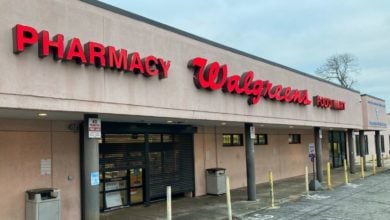In response to the crisis of affordable housing for low-income workers and the homeless, particularly in the African American community, a group of South Florida organizations and individuals calling themselves “Take Back the Land” took control of a plot of government-owned land for the benefit of the people on Oct. 23.
There was an immediate response from the Miami Police Department that resulted in a short standoff. The people
|
The plot of land has sat vacant for nearly a decade after it was slated by the government to become an affordable housing development. Take Back the Land now aims to build housing for the community itself, without government assistance or interference.
“We took control of the land because the government has been actively making matters worse, not better. Therefore, we are forced to provide for our community in a way the government is unable or unwilling to do themselves,” said Max Rameau, from the Center for Pan-African Development and organizer of the land takeover.
“This started because of the housing crisis in Miami and its particular impact on the Black community with gentrification,” Rameau added.
He continued, “Groups have worked on these issues for years without any success. And it turns out that the elected officials and county government have been stealing the money slated for affordable housing. We couldn’t go back to the government, since they were the problem. We had to take back the land.
“Between 1998 and 2000, the city demolished about 500 apartment units in several lots around here, leaving more than 1,000 people without homes,” Rameau said. “And since then, they haven’t built anything.”
The site now has about 20 brightly painted structures built with pallets, wood and cardboard. Each structure carries a name at its entrance. One is named after revolutionary journalist and political prisoner on death row, Mumia Abu-Jamal. Another is named after Black Panther Fred Hampton, who was assassinated by Chicago police in 1969. There are port-a-johns on the land; a shower system is being installed.
The site is not only an example of class struggle but also one of working-class solidarity.
On Oct. 28, Max Rameau addressed the anti-war rally organized by the ANSWER Coalition (Act Now to Stop War and End Racism) in Miami. After the protest, people joined a caravan to the Take Back the Land site for another rally featuring Gold Star Family members Carlos and Melida Arredondo, the father and stepmother of Alex Arredondo, who was killed in Iraq in August 2005. Additional solidarity events are being planned.
People from all over Miami are stopping by the land to give donations of food, clothing, and money and to help out. The Liberty kitchen regularly feeds 20 people a day, but on busy days it has provided meals for up to 75 people.
There have been great gains due to militant action and community solidarity, but the struggle to take back the land is not over yet. The state attorney general’s office has come by the site to take pictures. When questioned by Take Back the Land residents, the officials replied, “We don’t have to say what we are doing.”
“Rather than investigate us, the state attorney general’s office should investigate the $40 million dollars that has been stolen,” Rameau said. Take Back the Land is protected by the 1998 Pottinger vs. Miami class-action suit setting the legal precedent that homeless people cannot be arrested for conducting life-sustaining activities when no shelter space is available.
Take Back the Land is asking for donations and support. Visit the group’s website for more information: www.takebacktheland.blogspot.com.







